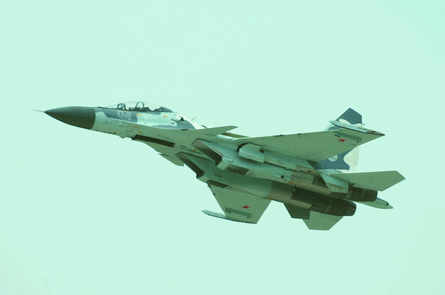Indian companies are reaping rich rewards from the country's military modernisation programme, with the private sector increasingly competing with established players like Hindustan Aeronautics for highly lucrative contracts in the coming years.
Foreign companies must reinvest 30-50% of the value of the contracts in India, and air force deals alone could result in an estimated $15-20 billion in offsets over the next decade.
"The government is keen to acquire the latest technology and benefit the local economy through these contracts," says an Indian observer.
BIGGEST PRIZE
The biggest deal is a $10-12 billion multirole combat aircraft competition, in which the successful bidder faces a 50% offset requirement.
The Boeing F/A-18E/F, Dassault Rafale, Eurofighter Typhoon, Lockheed Martin F-16, the RSK MiG-35 and Saab Gripen are all in the fray for the 126-aircraft deal.
New Delhi is also keen to buy 197 military light utility helicopters for $750 million and 22 attack helicopters for $500 million, has ordered six Lockheed C-130J transports, and will imminently confirm deals for the Boeing P-8I Poseidon maritime patrol aircraft and 80 new Mil Mi-17-IV multirole helicopters.
HAL, which has had more success with licence-production than the development of its own aircraft, will continue to benefit, say observers. It will manufacture 108 of the fighters that India orders under the MRCA competition, making it a key partner for the bidders. Last year, it also signed a deal with Boeing that could see the US company outsource around $1 billion worth of manufacturing work over 10 years.
 |
|---|
© Vladimir Karnozov |
Its orderbooks are heavy with the licence-production of the BAE Systems Hawk advanced jet trainer and Sukhoi Su-30 fighter, and it will work with Russia on a medium transport aircraft and fifth-generation fighter. "HAL is the only company in India with dedicated aircraft manufacturing facilities, and so it is the logical partner for most aerospace companies," says the New Delhi-based source.
PRIVATE CHALLENGERS
HAL faces a challenge from private companies, after India issued licences to companies such as Tata Group and Larsen & Toubro to produce defence items. Software houses such as Infotech and Wipro are also keen to build their defence business.
After being limited to supplying raw materials, components or design technology for many years, these companies are looking for a bigger share of the pie.
Tata, with its experience in manufacturing and engineering, is the likeliest challenger to HAL as a lead systems integrator. In May, it signed a deal with Israel Aerospace Industries to develop and produce a range of military products. It has also signed agreements with Boeing and EADS.
"It will not be surprising if Tata outbids some of the established government-owned companies on its way to securing some big-ticket contracts from the MoD," says Laxman Kumar Behera, an associate fellow at the Institute for Defence Studies and Analyses in New Delhi.
L&T will also partner foreign companies in the MRCA competition, and has been working with the Defence Research and Development Organisation for several years on new defence products. The opening up of the defence sector will primarily benefit its heavy engineering division, which has "good prospects in the short to medium term", adds the company. It has constructed a new strategic systems complex to integrate and test weapon systems, sensors and engineering systems, and is setting up a precision manufacturing facility for defence products.
Given the emergence of India's IT industry, it is no surprise that Wipro, India's third largest software company, looks to get in on the act. It is setting up units for electronic warfare systems, radars, flight-control systems, flight simulators and engine systems for companies like BAE Systems, Lockheed and Northrop Grumman.
"Revenues from defence are small, but the big revenues will start flowing from the middle to the end of 2009," says Sudip Nandy, chief executive of telecom and product engineering services at Wipro.
Who is top of the top guns? Find out at flightglobal.com/fightermarket
Source: Flight International



















